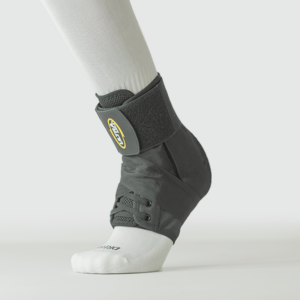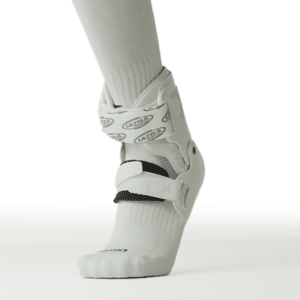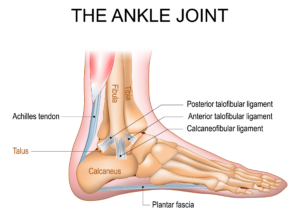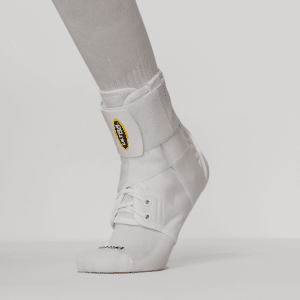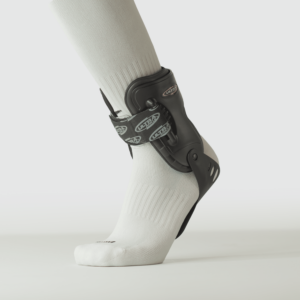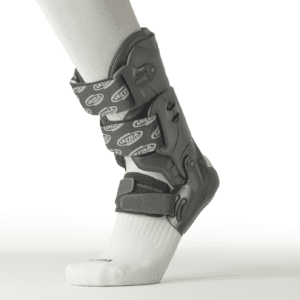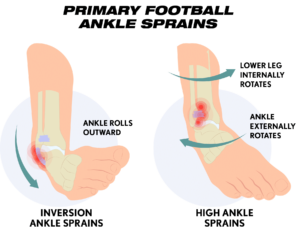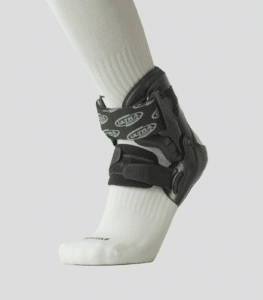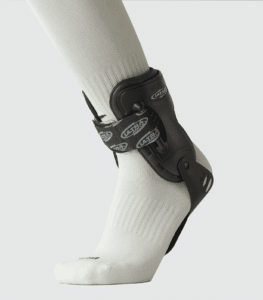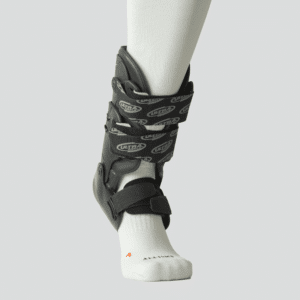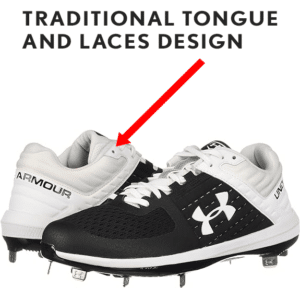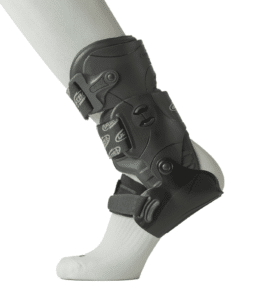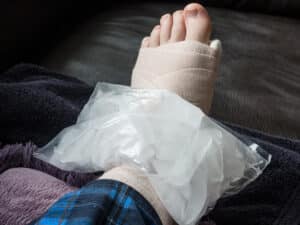Do Ankle Braces Work?
It’s an age-old question and there are a myriad of opinions out there. What we do know is our ankles bear a lot of weight and are often subject to sharp and awkward movements. It is no surprise that injuries are common, so, when it comes to ankle injury prevention, support, pain management, and healing, do ankle braces actually help?
In short, yes. The long answer, however, is a little more complicated.
The Functionality of Ankle Braces:
Ankle braces have gained popularity as an aid in injury management and prevention. They are designed to provide stability, limit excessive movement, and offer support to the ankle joint. By minimizing the risk of unnatural twists and turns, ankle braces can significantly reduce the likelihood of sprains and strains during physical activities. However, not all ankle braces are alike. When considering buying an ankle brace, take the following into consideration:
- The brace must be made of quality materials and meet medical standards.
- Your ankle brace needs to fit you perfectly. That means any fabric should not be loose or too tight. Any splints should be anatomically contoured and all padding needs to be well placed.
- The brace must suit your specific condition. Are you wearing it for ankle injury prevention or recovery? Do you already have unstable ankles? Have you incurred a high ankle sprain or an acute ankle sprain?
For example, a neoprene “brace” won’t be the best choice for helping prevent an ankle injury and a neoprene “brace” certainly won’t help you recover from an ankle injury. That’s because there are no medical compression standards for neoprene. Additionally, cheap cost means mass production, which makes it very difficult to find a perfectly sized brace for your ankle. Remember, your brace must properly support and compress your ankle in key areas, because if it doesn’t, you risk ineffective injury prevention. If recovering from an injury you’ll likely have little to no relief from pain and swelling, at best, and re-injury at worst.
Also not recommended for ankle injury prevention or recovery are compression sleeves. The primary function of compression sleeves is to support your muscles by providing slight pressure and compression to promote optimal blood flow to the area the sleeve surrounds. Studies have shown that wearing compression sleeves dilates your arteries, resulting in increased blood flow, or vasodilation. Vasodilation is the widening of the blood vessels as a response to low oxygen in the blood, which happens during exercise and triggers an increased blood flow. Increasing blood flow improves the levels of oxygen and nutrients delivered to the body, which enables you to power through your workouts. What this means is compression ankle sleeves do nothing to actually support your ankle joint.
Lastly, in a study done by the International Journal of Sports Physical Therapy, it was determined that with the right ankle brace or stabilizer, athletes wearing ankle braces had a 64% reduced risk of ankle sprains compared to those with no ankle brace.
So, what braces do you want to buy that will provide you with the support, comfort and recovery benefits you may need?
Introducing Ultra Ankle® Products:
Among the leading brands in the ankle support industry, Ultra Ankle stands out for its advanced and scientifically engineered solutions. Ultra Ankle products combine cutting-edge technology with ergonomic design to offer unparalleled protection and comfort.
-
The Ultra 360 Lace-Up is a game-changer in the world of ankle support. Its innovative design incorporates adjustable figure-8 straps provide 360º of ankle support to help prevent excessive ankle rolling. The multi-adjustable design allows you to customize your level of support. The Ultra 360 is recommended for individuals who require mild ankle support and have a minimal history of ankle injuries.
-
Specifically tailored for athletes, the Ultra Zoom Ankle Brace offers a perfect blend of flexibility and support. Its sleek, low-profile design fits comfortably in sports shoes (traditional tongue and laces), making it an ideal choice for basketball, volleyball, football, soccer, and other high-impact sports. The Ultra Zoom’s Performathane® soft shell conforms to the ankle’s natural shape, through body heat, ensuring maximum comfort while providing maximum support. The patented Hinged-Cuff design allows the ankle to move in all its natural motions, and none of the bad ones, while still keeping all the tendons and muscles fully engaged as the brace does not bind the ankle and foot in the Neutral Position. The hinged-cuff design also helps to prevent high ankle sprains, which are much more painful and take much longer to recover from.
-
Have a history of ankle injuries? Are your ankles chronically unstable? Then the Ultra High-5 may be the ankle brace for you. With its feather-light but incredibly strong materials, the Ultra High-5 reinforces unstable ankles and can handle even the toughest twists and turns. The Ultra High-5 is also a great ankle brace for athletes and individuals who have recurring joint pain due to excessive pounding unforgiving surfaces.
-
When it comes to high ankle sprains, acute ankle injuries, or even Ankle Osteoarthritis, the Ultra CTS Ankle Brace shines. Engineered with the patented PerformaFit® upright technology, this brace mimics the anatomical contours of the ankle, delivering personalized support and stabilization.
- High-Ankle Injuries: A high ankle injury occurs when the ankle is excessively externally rotated. The Ultra CTS has a hinged-cuff design which restricts excessive ankle inversion and ROTATION to treat both LOW and HIGH ankle injuries allowing the injured soft tissue to quickly heal.
- Acute Ankle Injury: With an acute ankle injury you will most likely have weight bearing pain. The Ultra CTS will “unload” the ankle. Ankle unloading means the brace will absorb some of the impact from standing or walking that would normally be transferred into the ankle causing pain. Maximum lower leg and ankle support and stabilization will take stress off the injured ligaments allowing them to heal much quicker.
- Osteoarthritis: With bone-on-bone joint irritation, or osteoarthritis (OA) you will need an ankle brace that will “unload” the ankle. Ankle unloading means the brace will absorb some of the impact from standing or walking that would normally be transferred into the ankle causing joint irritation and pain. For more details on how the Ultra CTS works for Osteoarthritis please visit our Osteoarthritis Page
The Verdict:
Do ankle braces actually help? The answer is a resounding yes, especially when armed with the right information and equipped with superior products like those offered by Ultra Ankle. Ankle braces serve as vital tools in both preventing and managing ankle injuries. With Ultra Ankle’s range of advanced solutions, individuals can confidently pursue their active lifestyles with reduced worry about potential ankle-related setbacks.
Conclusion:
In the realm of ankle support, Ultra Ankle products have truly elevated the game. Their commitment to blending science, comfort, and innovation has resulted in a lineup of braces that not only provide exceptional support but also contribute to the overall well-being of athletes and individuals. So, if you’re considering investing in ankle braces to safeguard your ankles, don’t overlook the transformative offerings brought forth by Ultra Ankle. Your ankles will thank you for the reliable protection and support these products provide.

